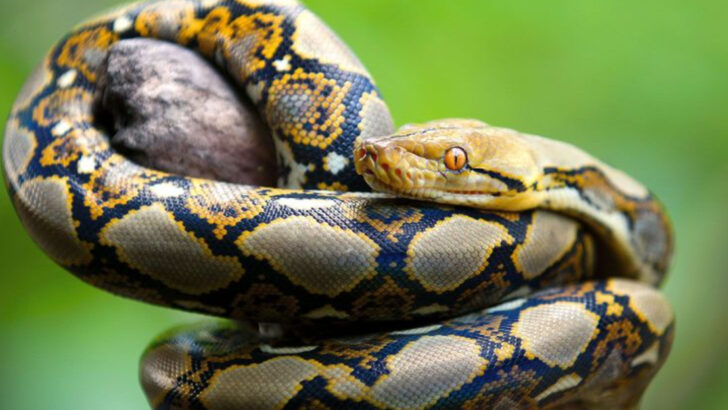Forget what you know about snakes. The ones roaming the U.S. aren’t just big—they’re monsters. With length and weight that defy the imagination, these colossal reptiles dominate their habitats in ways that’ll make you look twice (or run!).
Imagine encountering a snake longer than a school bus or heavier than a fully grown man. Some of these serpents can stretch up to 20 feet or more, slithering through forests, swamps, and even urban jungles.
They may seem like creatures from a fantasy world, but these giant snakes are real, and they are ruling parts of the U.S. with a chilling presence. From the fierce Burmese Python to the ever-terrifying Eastern Diamondback, let’s take a peek into their world and explore what makes them so terrifyingly fascinating.
These snakes may be misunderstood, but their power and size make them unforgettable. Welcome to the world of the giants.
Eastern Indigo Snake
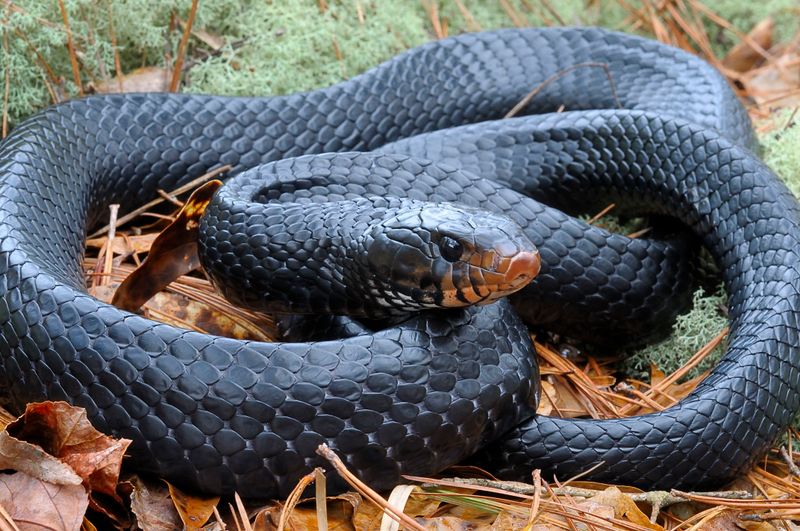
The Eastern Indigo Snake, native to the southeastern U.S., is a true giant among snakes. Reaching lengths of up to 9 feet, it’s recognized by its striking blue-black coloration.
Residing primarily in Florida and Georgia, this non-venomous serpent is known for its gentle nature and diverse diet, consuming small mammals, birds, and even other snakes.
Despite its size and beauty, the Eastern Indigo faces threats from habitat loss and fragmentation. Conservation efforts are crucial to preserving its habitat. This incredible snake’s resilience and adaptability make it a fascinating subject of study for herpetologists.
Burmese Python
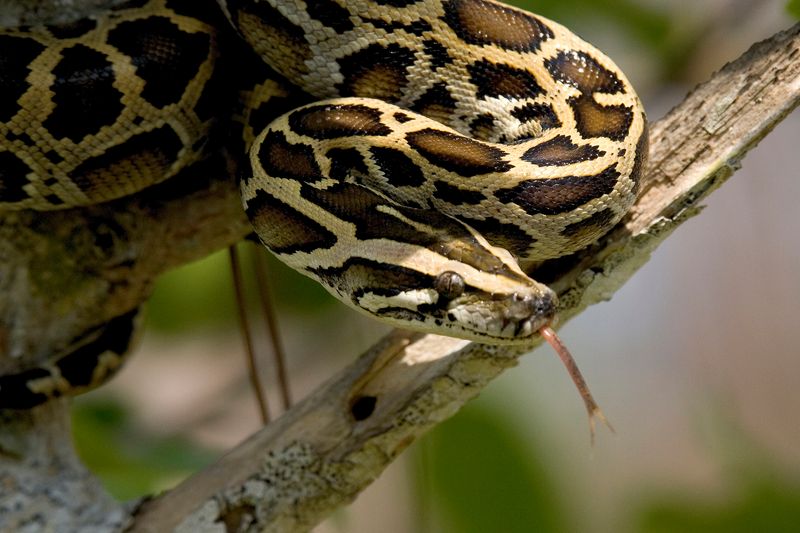
The Burmese Python, an invasive species, has made the Florida Everglades its infamous territory. Some of these monsters grow over 18 feet long, dominating the ecosystem.
With their constricting power, they prey on a variety of wildlife, significantly impacting local species. Their presence is a growing concern for conservationists who aim to protect native flora and fauna.
Efforts to control their population include organized hunts and removal programs. Learning about these pythons offers insights into the challenges of managing invasive species and balancing ecological needs in vulnerable habitats.
Western Diamondback Rattlesnake
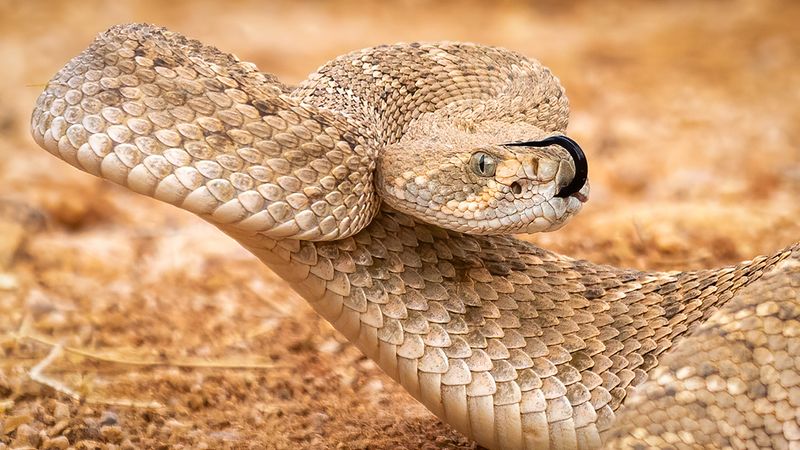
The Western Diamondback Rattlesnake, found in the arid deserts of the southwestern U.S., commands respect with its powerful presence. These snakes can reach lengths of up to 7 feet and are equipped with iconic rattles.
Their venomous bite is a key defense mechanism, used to deter predators and capture prey. This species plays a crucial role in controlling rodent populations.
Understanding their behavior and habitat preferences helps in fostering peaceful coexistence with humans. Public education on snake safety and preservation is vital to maintaining the delicate balance of these desert ecosystems.
Green Anaconda
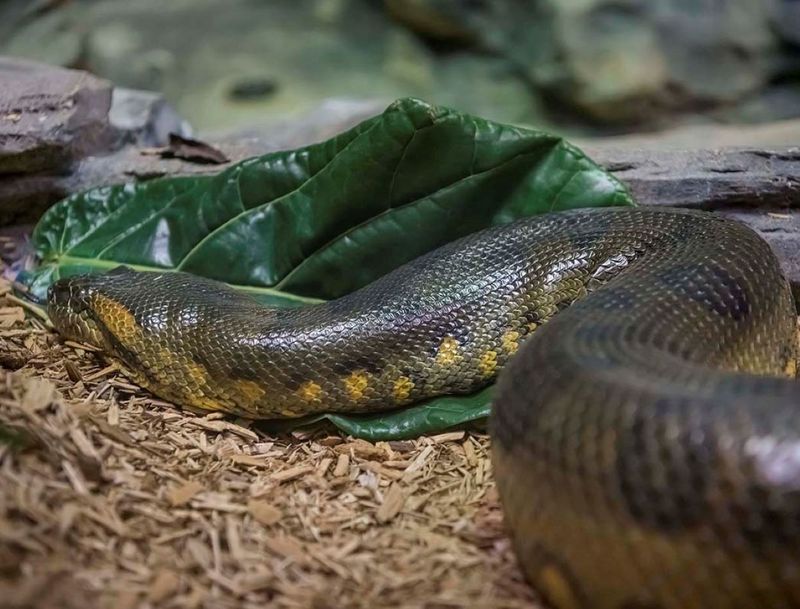
The Green Anaconda is often associated with the swamps of the Amazon, but it can also be found in the waterways of Florida. Known for its impressive size, this snake can grow over 20 feet long and weigh over 200 pounds.
Its olive green skin patterned with black blotches helps it blend seamlessly into its swampy surroundings. In Florida, the Green Anaconda has become an apex predator, with its diet ranging from fish to deer.
Despite its size, it is known for its stealth, lurking in the water with only its nostrils above the surface as it waits for prey. This snake’s power and stealth make it a formidable presence in the Everglades.
Boa Constrictor
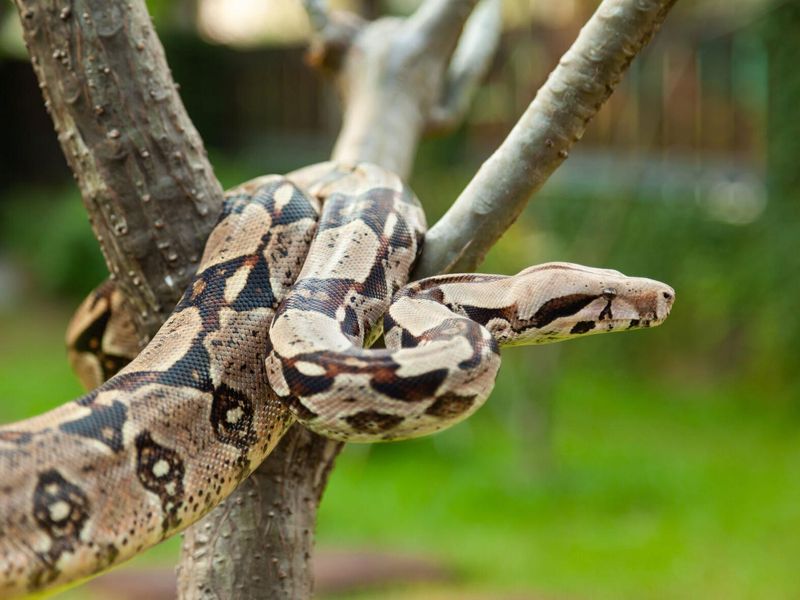
Although native to Central and South America, the Boa Constrictor has established itself in parts of the southern United States. Recognizable by its reddish-brown, saddle-shaped markings, it can grow up to 13 feet in length.
This snake thrives in a variety of habitats, from forests to dry grasslands. The Boa Constrictor’s hunting technique is fascinating, relying on its strength to suffocate prey through constriction.
Its diet mainly consists of small mammals and birds, which it patiently waits to ambush from a hidden location. Its adaptability has allowed it to survive and thrive in non-native environments.
Eastern Diamondback Rattlesnake
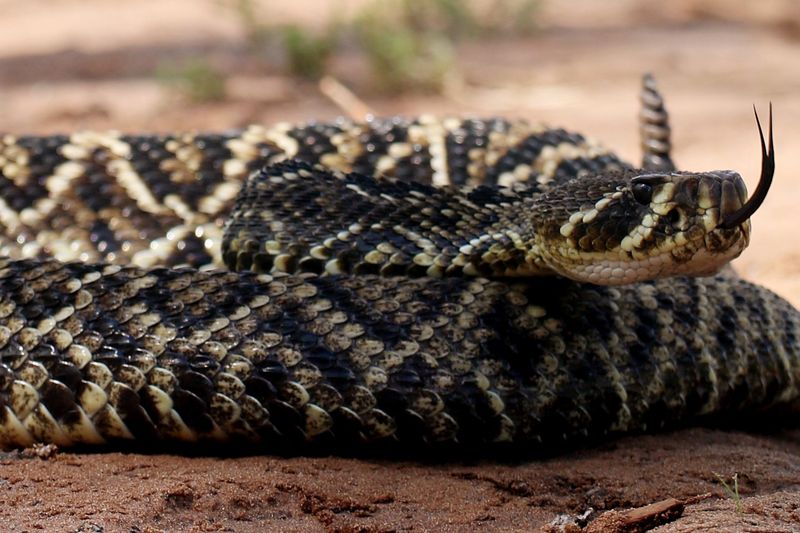
The Eastern Diamondback Rattlesnake, known for its formidable size, is the largest venomous snake in North America. It can reach lengths of up to eight feet and is characterized by its distinctive diamond pattern along its back.
This magnificent reptile is a resident of the southeastern United States, favoring dry pine flatwoods, sandy woodlands, and coastal scrub habitats. Despite its fearsome reputation, the Eastern Diamondback plays a vital role in its ecosystem by controlling rodent populations.
Observing one in the wild is a thrilling experience, as it commands respect with its sheer presence and the ominous sound of its rattle. However, it’s essential to admire this creature from a safe distance to prevent any unwanted encounters.
Northern Pine Snake
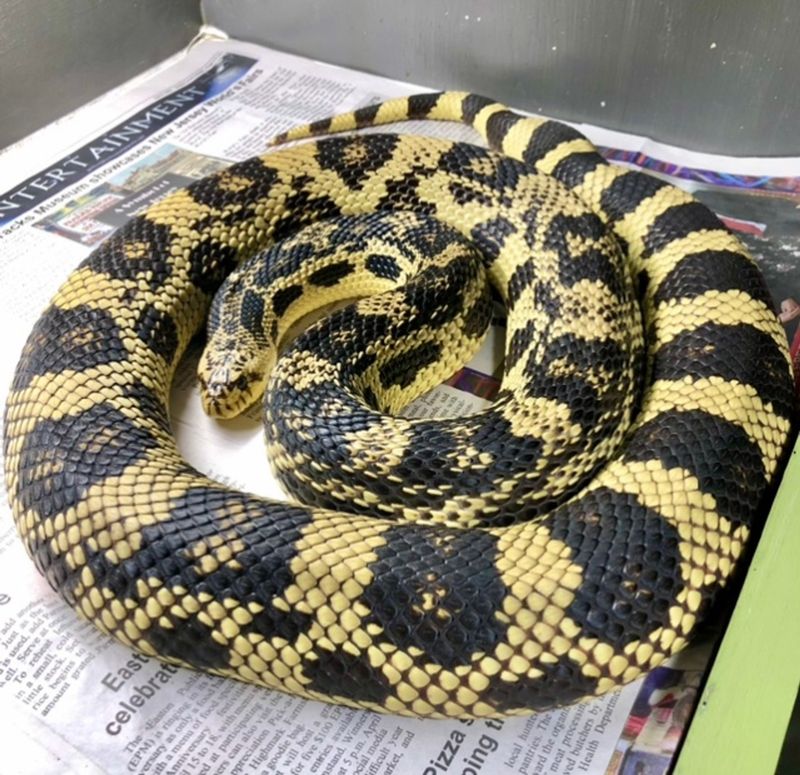
The Northern Pine Snake, with its robust build, is found in the eastern United States and can grow up to seven feet long. This powerful constrictor is primarily a burrower, using its strength to dig extensive networks underground.
Its light-colored scales with distinct patterns provide excellent camouflage in its woodland and forest habitats. One of the most fascinating aspects of these snakes is their ability to produce loud hisses, a defensive mechanism to ward off potential threats.
While they may seem intimidating, Northern Pine Snakes are an essential part of the ecosystem, helping to control populations of small mammals. Their presence in the wild is a testament to the intricate balance of nature.
Reticulated Python
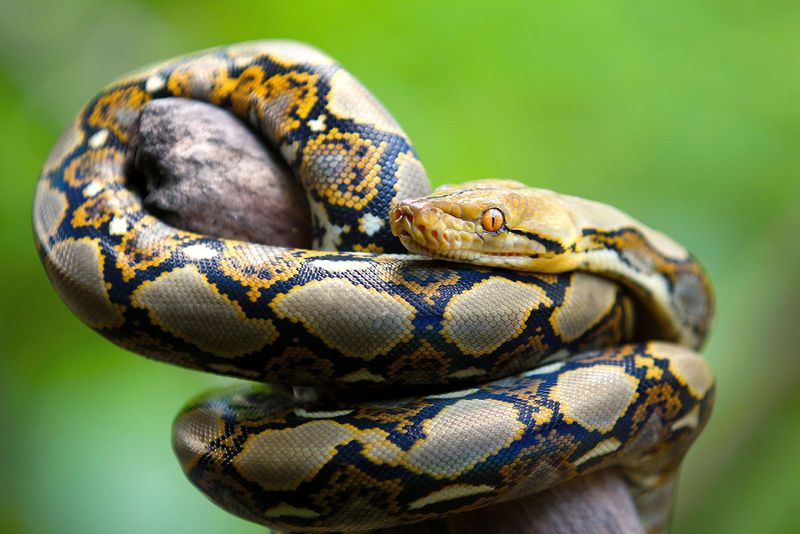
The Reticulated Python, famous for its incredible length, can exceed 20 feet, making it one of the longest snakes in the world. In the U.S., they are primarily found in Florida, where they thrive in the state’s warm, humid climate.
Their reticulated pattern aids in camouflage, allowing them to blend seamlessly into their environment. These pythons are non-venomous constrictors, using their muscular bodies to subdue prey.
Despite their intimidating size, Reticulated Pythons are generally not aggressive toward humans but should still be respected for their strength and size. They underscore the diverse array of snake species that can adapt to different environmental conditions.
Bullsnake
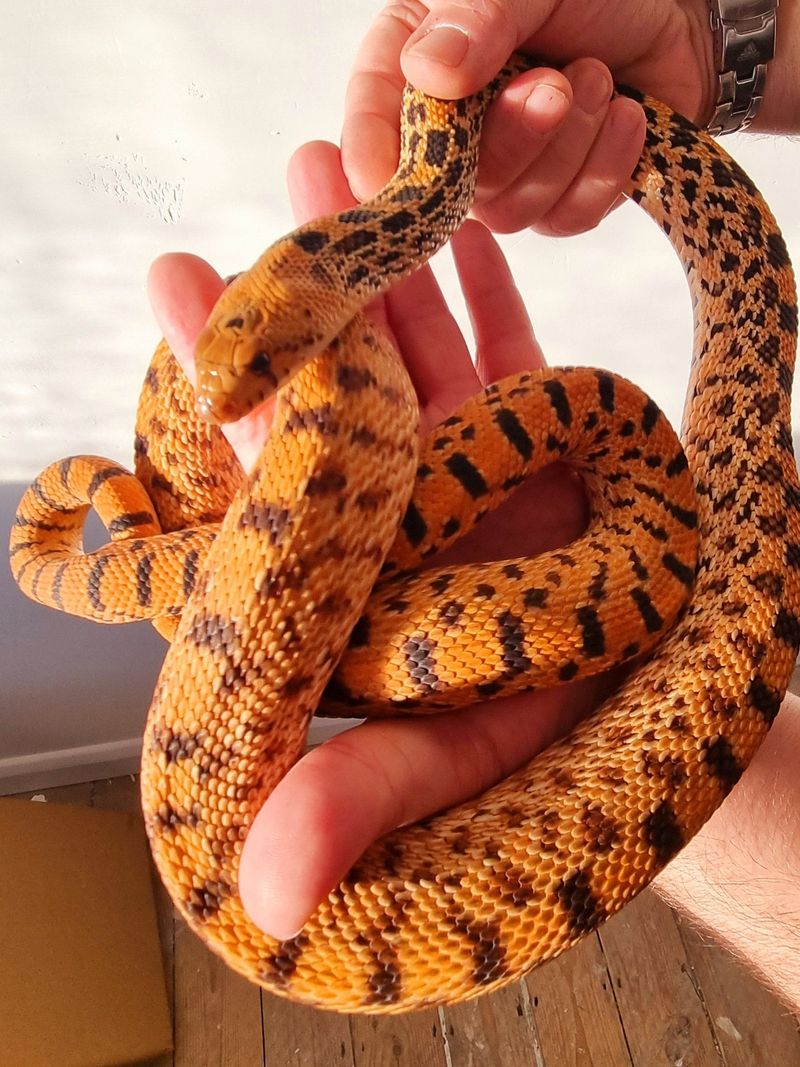
Bullsnake
The Bullsnake, reaching lengths of up to eight feet, is often mistaken for the rattlesnake due to its similar patterns. As one of the largest nonvenomous snakes in North America, it plays a crucial role in pest control.
Found in the central United States, Bullsnakes thrive in prairies and open woodlands. Their robust build and distinctive hissing mimic rattlesnakes as a defense mechanism.
Bullsnakes are beneficial to farmers, as they hunt rodents that can damage crops. Observing one in its natural habitat is a chance to see a master of mimicry in action.

